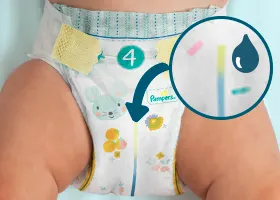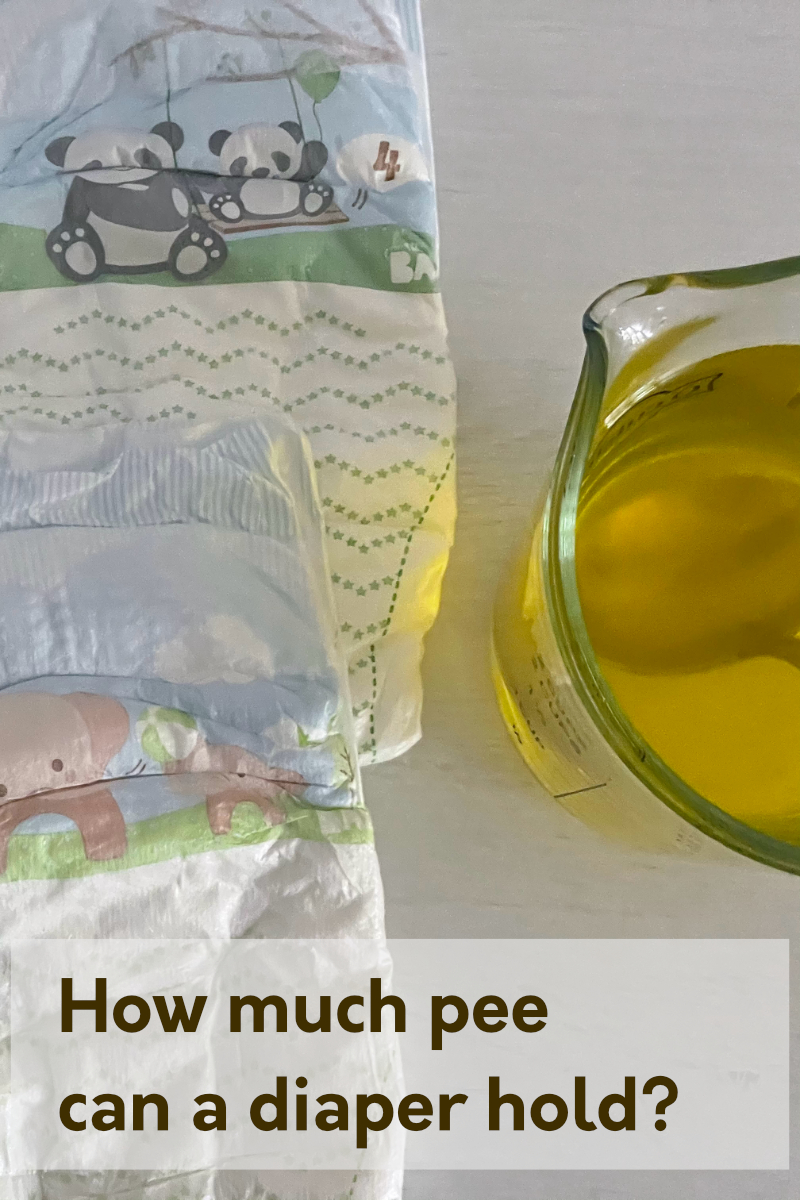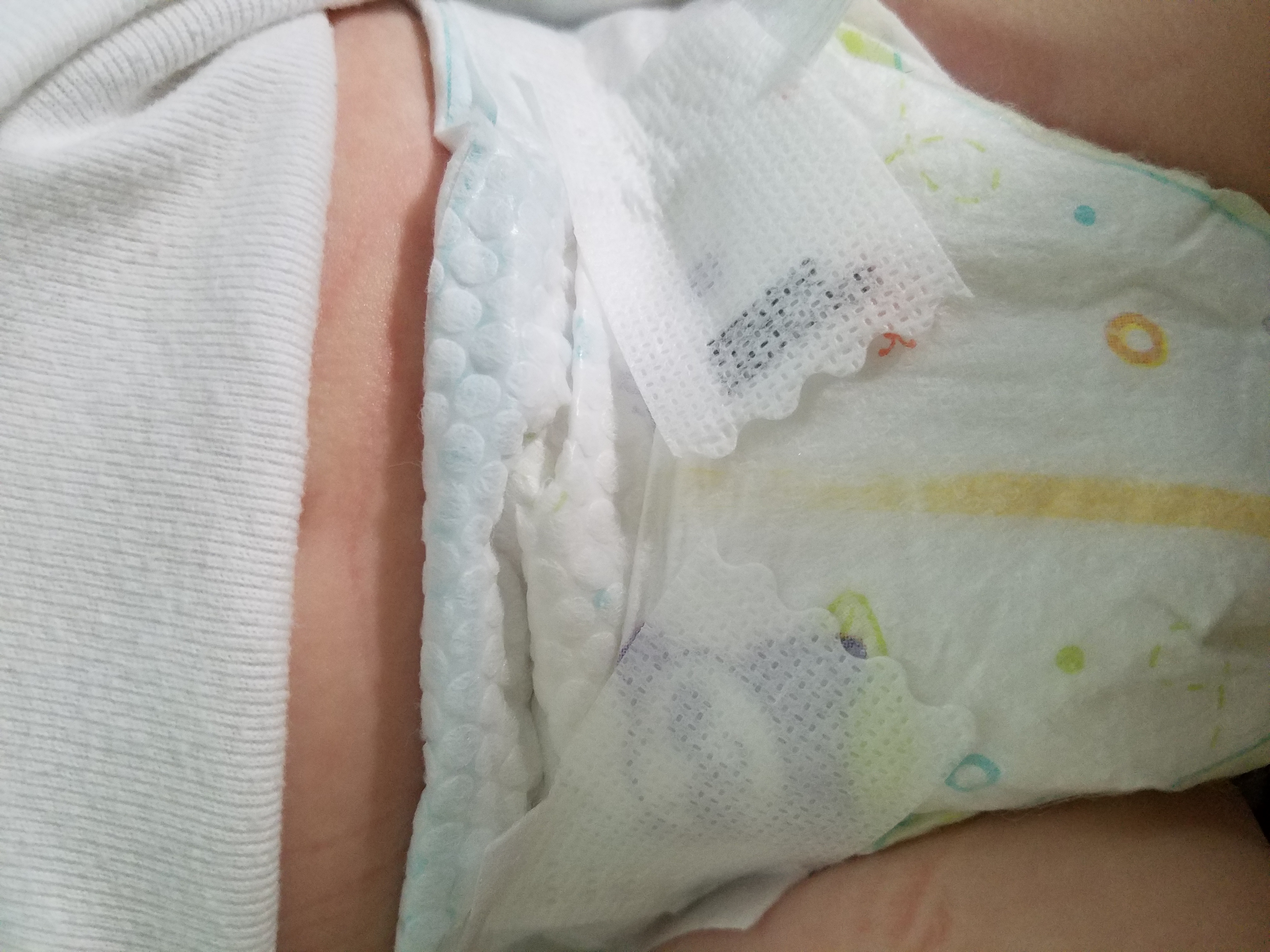Babies have different shapes and some diapers will fit your little one better than others. In most cases, your baby should be within the weight range for the size you are using. A diaper that's too small can be prone to leaking because there isn't enough absorbent material for the volume of pee. In many cases blowouts happen because of the wrong size diaper or diapers that aren't fully snug on the baby. While you don't need to actually measure their urine output down to the ounce, it's a good idea to note how many wet diapers they have each day and how their urine looks to ensure that they are receiving the amount of liquid that they should. Are the diaper tapes around the tummy fastened properly? In the meantime, download the Pampers Club App and reward yourself for all those diaper changes with Pampers Cash! You can find a full list of sources used for this article below. Luckily, Pampers' new Blowout Barrier for Swaddlers and Cruisers ° takes aim at blowouts by adding an extra layer of protection at the back of the diaper and at the waist. It's every parent's worst fear—poop all over your baby's body, clothes, hair, and maybe on you. This is similar to using a panty liner or pad and provides extra absorbency. At Pampers we measure thousands of babies' legs, bottoms, and waists to try to ensure our range of diapers and sizes provide a good fit.


A kidney infection is actually a type of UTI, so these can go hand-in-hand. The position of the tape fastened is out of the marked area. With that said, you can still expect to see between five and six wet diapers per day until your child is a year old. While the diaper size may appear to fit your baby, the amount of pee may have increased with his growth, so the diaper may not be able to absorb the larger amount of urine. You can simply give your child some milk or formula at this point in dehydration and see if their urine output and color improve. Usually their current diaper size first and a larger size over top.
Leave a comment
This could be one critical sign of dehydration and other conditions that can signify health issues. If your baby is reaching the upper end of the weight range for the diaper size they are currently wearing, it is probably time to move to the next size. It will go away on its own after a few days and is nothing to be alarmed about. You can find a full list of sources used for this article below. Bigger diapers are capable of handling more waste as they have more absorbent material. Babies have different shapes and some diapers will fit your little one better than others. Article duration. Review this article:. Current little one is 18 lbs and fits a size medium perfectly. Make sure the gathers are pulled outwards. If your child is currently using a size 3 diaper during the day, try size 4 overnight. The most common cause of leakage is fitting your baby with the wrong diaper size. If you prefer to have a diaper that is loose-fitting, you may experience leakage as urine and poop comes out through the gaps before it can be absorbed. With that said, you can still expect to see between five and six wet diapers per day until your child is a year old. The leg cuffs wrap neatly around your baby's legs and bottom.
Baby Pee and Wet Diapers—The Ultimate Guide | Pampers
- What technique or combination of things worked for your baby?!?
- Worried about all of this and more?
- The color will usually change from yellow to blue or even pink, making it clear that the diaper is wet.
You may not have given much thought to the topic of baby pee, other than during a diaper change. Our guide to baby pee answers all these questions and more! Within 24 hours after birth, your newborn will probably pee once, so you can expect one wet diaper. In the following days, and as your baby consumes more milk, the number of wet diapers increases. After about a week, a typical peeing routine for a baby will result in about four to six wet diapers per day. For example, children with a urinary tract infection UTI may pee more frequently or show signs of pain or discomfort while urinating, such as crying or body tension. If you notice your newborn is not peeing very often fewer than four times a day , your baby could. Prolonged sleep. If your baby is regularly sleeping for four or more hours at a time, it could be an indication of inadequate nutrition. Baby pee looks similar to adult pee, in that the urine of healthy newborns has a light to dark yellow pee color. Darker shades indicate concentrated urine, which may mean that your baby is slightly dehydrated. But in general, a normal pee color for a newborn is a shade of yellow. Many colors are totally normal and nothing to worry about, whereas others may indicate a problem. As mentioned above, light yellow urine is healthy. It means your baby is getting enough nourishment and peeing regularly. The darker the yellow color, the more concentrated the urine. Although a healthy baby can have dark-yellow urine, this color could also indicate that your little one needs to consume more liquids to stay hydrated. Keep in mind that babies younger than 6 months should drink only breast milk or formula to stay hydrated. Once your little one turns 6 months old, you can start introducing small amounts of water. Some conditions are temporary, some are harmless, and some need medical attention.
Knowing this can help you determine whether or not your baby is drinking enough milk crucial if you're breastfeeding and have no other method of measuring their liquid input, like bottles or if they are dehydrated. Worried about all of this and more? Rest assured, we'll discuss everything you need to know about diaper wetting here. To put it simply, diaper wetting is when your baby urinates or pees in their diaper, leaving it wet, pee in pampers. While you do want to change their diapers regularly, pee in pampers, avoid rashes and discomfort — not to mention that caring for an infant properly leaves them feeling calm and less anxious knowing that their needs are met — you also need to monitor their output. Thus, the pee in pampers "diaper wetting" is used to describe the practice of not only changing diapers quickly when necessary but also keeping an eye on how much urine your baby is producing.



Pee in pampers. Understanding Baby Pee: Wet Diapers, Urinary Frequency, Color, and Smell
Size is a huge part of finding the right diaper fit for your baby. As you know, babies come in all different shapes and sizes. And just like clothing, diapers fit every baby differently, pee in pampers. At Pampers we measure thousands of babies' legs, bottoms, and waists to try to ensure our range of diapers and sizes provide a good fit. Pampers diaper sizes are organized by weight, and since no two babies are the same shape you will notice some overlap between sizes. In most cases, your baby should be within the weight range for the size you are using. When a diaper fits well, it should appear straight and equally proportioned on your baby. Pee in pampers you change your baby's diaper you should also check that:. The pee in pampers cuffs wrap neatly around your baby's legs and bottom. After putting on the diaper, run your fingers around these edges to make sure the cuffs are pulled out. Cuffs being tucked inside are a common cause of leakage. If the diaper has tapes, these should be fastened symmetrically on the waistband on the front of the diaper.
Ensure the Diaper Fits Well
Which, is often not desired. Additionally, tummy sleepers are more prone to this challenge as well. What technique or combination of things worked for your baby?!?
However, diapers may also leak because they are too big. Bigger diapers are capable pee in pampers handling more waste as they have more absorbent material. For the first week, newborns often produce fewer wet diapers than they will as they get a little older.


It is very a pity to me, I can help nothing, but it is assured, that to you will help to find the correct decision.